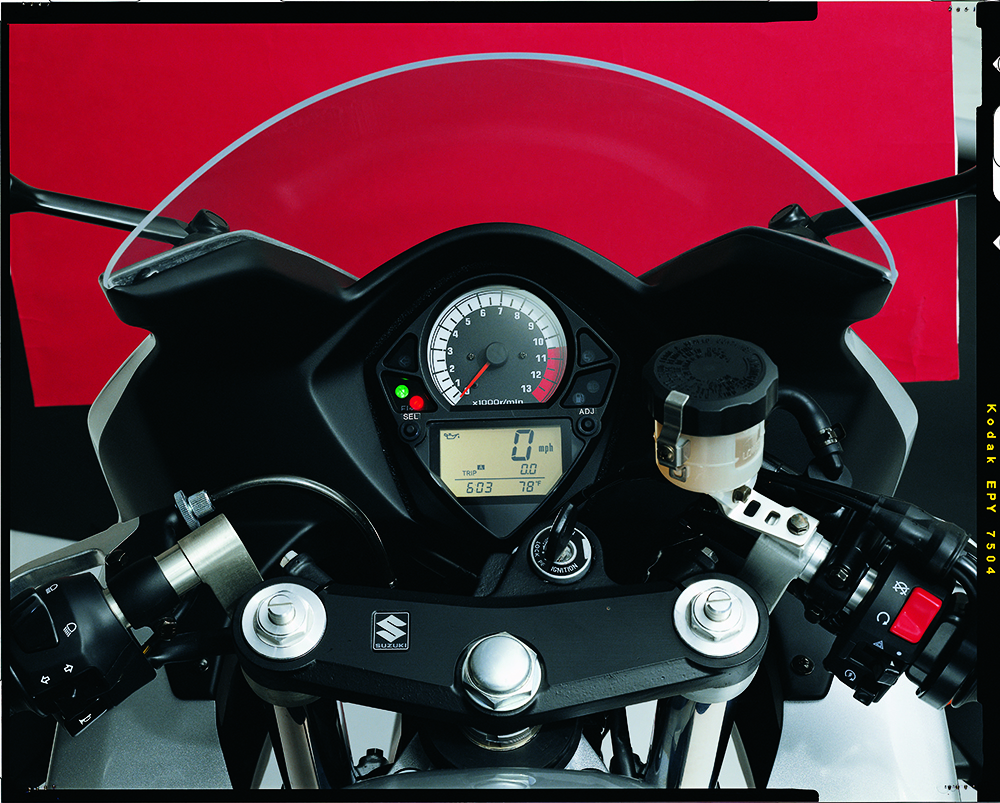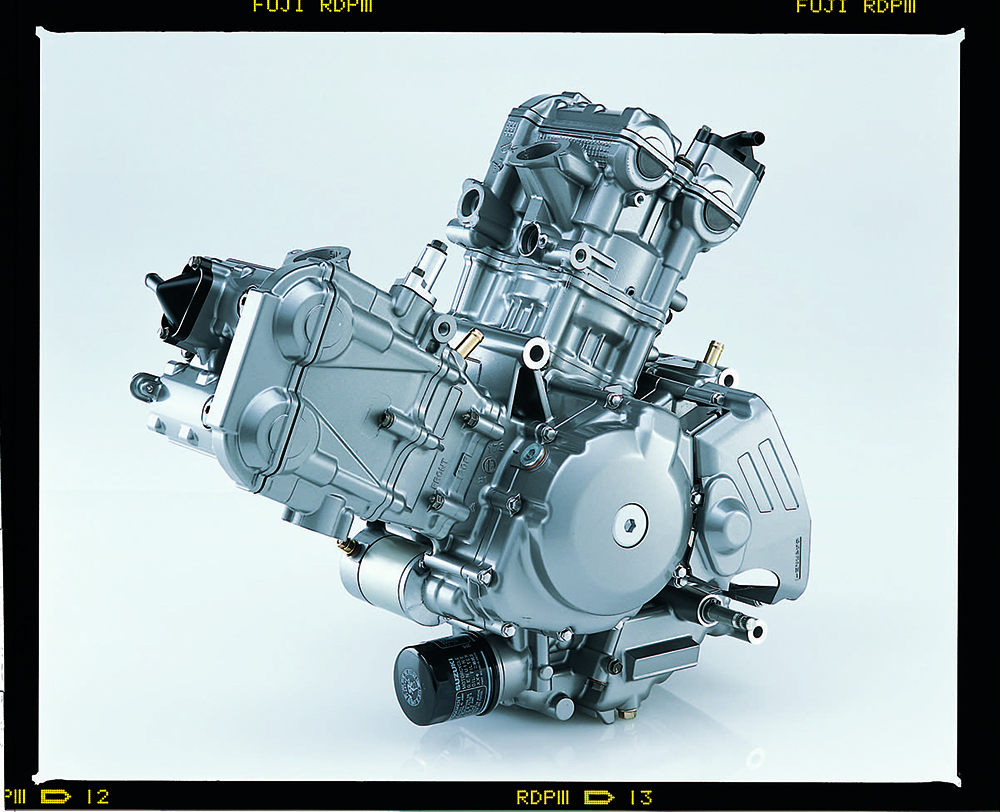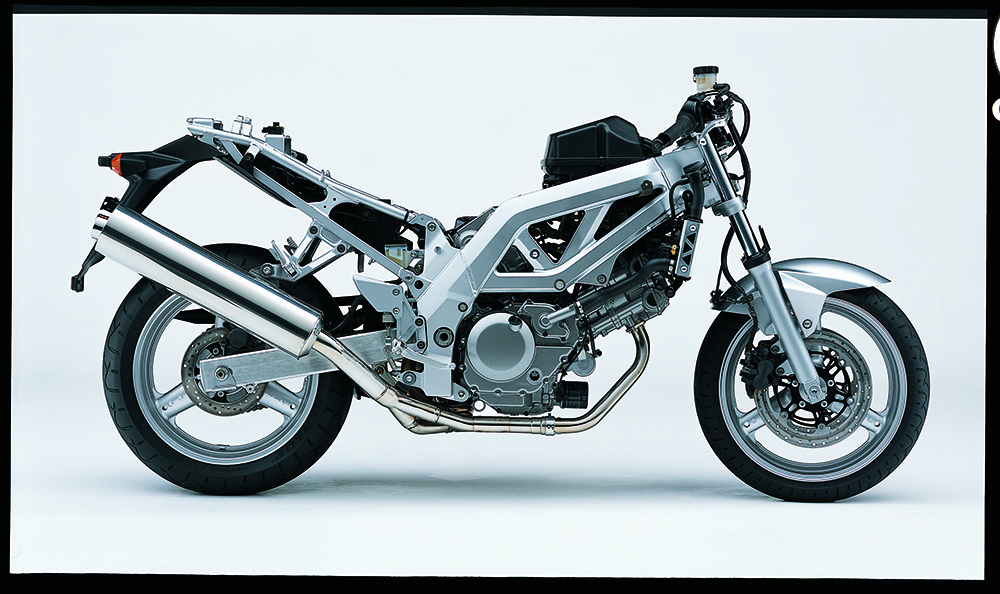Middleweight twins might be where it’s at today, but this is where it was a decade or two ago
Back in 1999, Suzuki released the first of the hugely popular SV650 series. The SV was considered to be a smaller version of the firm’s TL1000S model, although it was a highly regarded machine in its own right. The machine came in a half-faired (SV650S) and naked (SV650) editions, although for this article we will focus on the SV650S.
The original SV650S came equipped with two 39mm Mikuni carburettors that fed the mixture into a 90° DOHC V-twin measuring 81x 62.6mm, for 645cc. Those dimensions yielded a compression ratio of 11.5:1, and although the SV650S was shoehorned as a bike that could tour equally as well as it could hit the twisties, the 645cc donk loved to rev and provided substantial power in the mid-to higher rev ranges.
The chassis was an aluminium-alloy truss type – Suzuki engineers preferred this frame layout over the heavier twin-spar aluminium frames for the SV V-twin’s power characteristics.
Suspension consisted of a set of non-adjustable conventional forks and a monoshock assembly out the back that was only preload adjustable.
Only minor changes followed for the SV650 over the preceding four years, which saw ownership of Suzuki’s mid-sized V-twin skyrocket internationally, with a number of one-make SV race series’ springing up in the US and Europe.
Fast forward to 2003 and Suzuki released a complete makeover of the SV650S. The most obvious change to the eye was the restyled bodywork that aligned the 650S much closer to the then-new TL1000S replacement, the SV1000. The design lines had gone from sweeping curves to sharp, pointy panels – much like the GSX-R1000K3. The dash was an all-new design that took its styling cues from the Ducati 999 with a large, central tacho and a digital speedo mounted beneath it.

But the biggest change was undoubtedly reserved for the engine. The new engine still retained the 90°, 81 x 62.6mm dimensions with 31mm intake and 25.5mm exhaust valves, but came with the addition of fuel injection and the Suzuki Dual Throttle Valve (SDTV) system. Lighter conrods, revised valve timing and a new set of camshafts helped to reduce weight, and the new model came with the addition of an oil cooler and a much bigger airbox, up from 5.8 to 8.5 litres. A new exhaust system was also fitted to the SV650S, now equipped with a catalytic convertor and Suzuki’s PAIR (Pulsed Air Injection System) to reduce emissions.
The engine still produced the same claimed power of the 1999-2002 model of 51kW at 9000rpm and 61.7Nm of torque at 7000rpm but power application was said to be much smoother than the outgoing model, as well as more consistent through the rev range.

Interestingly, the SV650 and SV650S differed in more ways than just the removal of the fairing. The SV650 had an extra tooth on the rear sprocket for snappier power at lower revs, while the sport-focussed SV650S copped a slightly reduced steering trail of 100mm vs 102mm thanks to different triple-clamps with less offset, to give it slight advantage in the quick-steer stakes. The SV650 also sported a longer wheelbase (1440mm vs 1430mm) thanks to its longer chain, which also gave the rear wheel an extra 3mm of travel at 137mm. The pegs were also 5mm higher on the SV650S over the SV650.
The suspension package copped a small upgrade with the addition of adjustable preload at the front-end, but the same rear shock from the original model remained. The brakes were not exactly the best of the day either, with only twin-piston calipers gripping twin 290mm discs up the front and a single-piston caliper slotting over a 220mm disc at the back, with feel at the lever not one of the SV’s strong points.
The SV650S came with an RRP of $11,290 back in 2003, placing it right in the middle of the class with the larger capacity ZR7 Kawasaki retailing for $10,790 and the Ducati 620ie selling for $11,795. Hitting the open road on the SV650S was not an issue either. The machine came equipped with some well-placed grab rails that made tying down luggage easy and pillions were well accommodated for what was essentially a sportsbike with touring capabilities.
SERVICE COSTS
The 2003 Suzuki SV650S service intervals are every 6000km. The first service would set you back around $300 – $350, and involved a general lube and adjustment of cables and chain, as well as the standard engine oil and filter replacement, but the throttle bodies were also checked for balance which added another half hour or so to the labour cost. The second service at 12,000km was similar to the 6000km one, with the spark plugs getting replaced for around $250 – $300. At 18,000km, the coolant came in for replacement, as did the air filter along with new engine oil and filter etc for $350 – $400. The major 24,000km service saw the SV650S get new spark plugs, oil and filter but the valve clearances also came in for inspection/adjustment. This would add an extra $200-odd onto the cost of the 18,000km service.

WHAT TO LOOK FOR
The 2003 incarnation of the SV650S has quite a good reputation as far as reliability and longevity is concerned. The 2004 edition, while being more or less the same machine, had a lowered subframe by 40mm for better pillion comfort but this seemed to have the added effect of delivering excessive heat from the rear cylinder to the rider’s bum. The fairing-mounted mirrors came in for some attention as they tended to rattle, which made vision an issue. Some owners have opted for bar-mounted items to cure this.
The original SV650 vanished in 2010 with the introduction of the unfortunately named Gladius, but was reintroduced in 2018 when Suzuki jumped on the cafe-racer bandwagon with a modern retro version.
